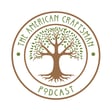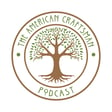
The Shakers: Right Place, Right Time? Season 2, Episode 23.
Were The Shakers just in the right place, at the right time? Have a listen and let us know what you think.
Affiliate Links:
10% off of Vesting USA finishing products:
Use AMERICANCRAFTSMAN at https://rpmcoatingsolutions.com/
10% off your order from Montana Brand Tools:
https://www.montanabrandtools.com/discount/AMERICANCRAFTSMAN
Greene Street Joinery is a custom design & build shop located in Monmouth County, New Jersey. We build multigenerational furniture with an eco-friendly and sustainable mindset.
Inspired and guided by the ideals of the Arts and Crafts movement, we believe in the use of traditional craftsmanship and simple, well-proportioned forms; sustainability and ethical practices; and importantly, taking pleasure in our work as craftsmen to create quality pieces of enduring value.
Follow us!
Instagram: https://www.instagram.com/greene_st_joinery Facebook: https://www.facebook.com/greenestreetjoinery
Support us on Patreon!
https://www.patreon.com/Greene_st_joinery
Visit Us at https://www.greenestreetjoinery.com/
Support this podcast at — https://redcircle.com/the-american-craftsman-podcast/donations
Advertising Inquiries: https://redcircle.com/brands



